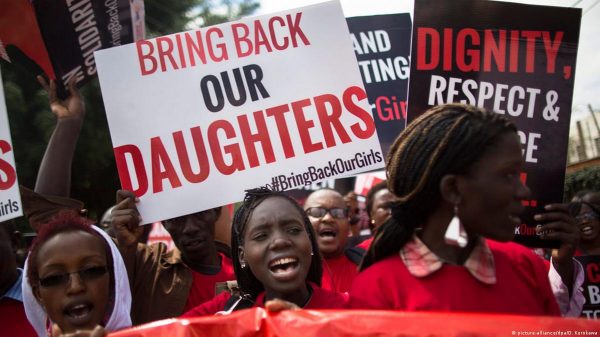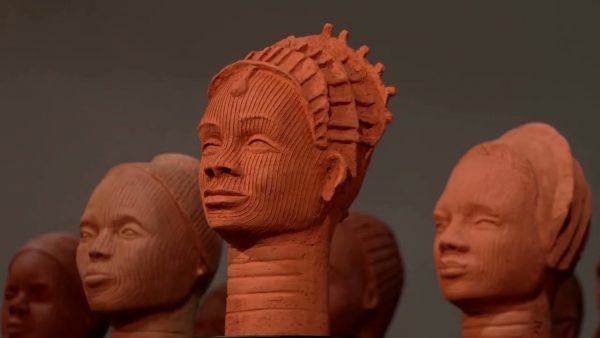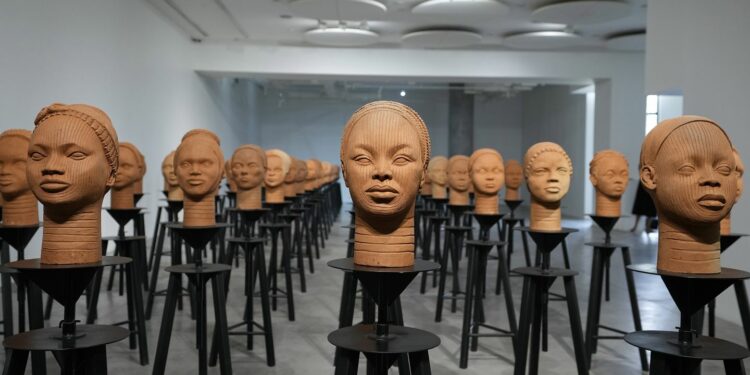The 108 still missing Chibok schoolgirls kidnapped by Boko Haram in Nigeria in 2014 have been commemorated in a new sculpture exhibition in Lagos. A collaboration between French artist Prune Nourry, university students, professional potters and victims’ families has sculpted out of clay the faces of 108 Chibok girls who remain missing nearly nine years after they were kidnapped by Islamist insurgents.
The artwork was inspired by the heads of ancient Nigerian Ife terracotta warriors, and the title of the exhibition is “Statues Breathe, too”. The sculptures reproduce the girls’ faces, facial expressions and hair patterns.
In 2014, 275 girls were abducted from the Chibok Community Government Girls Secondary School in northeastern Nigeria. The mass kidnapping sparked outrage and heartbreak across the globe, and the #BringBackOurGirls slogan was born. Former U.S. President Michelle Obama and many other leaders have advocated for their return.

Some 160 girls have since been released, many after years in captivity, but the story has faded from headlines and political momentum. The current president, Muhammadu Buhari, promised eight years ago to rescue the girls as a political plot to gain power, leaving the family void. The country’s national security adviser, Babagana Monguno, said in early December that the military was doing its job, but it was an “intelligence-driven process, which means unfortunately it will be tough”.
Habibat Balogun, Bringing Our Girls Back Lagos Coordinator said, “This is a permanent reminder that it happened, we had a period in Nigeria’s history where women, boys, men, children were taken, some were recovered, some are still displaced to this day, and some are still in captivity.”
French artist Prune Nourry collaborated with 108 students from Obafemi Awolowo University, and the family of the missing girl lent her daughter’s photo for a portrait. He then designed eight heads inspired by the photos, and the students sculpted a further 108.

Nourry hopes viewers of the exhibition “remember the importance of a girl’s education and the fact that sculpture can anthropomorphize someone, capturing breathing life and a symbol of someone’s life.”
The Chibok community remains under attack by Boko Haram and its splinter factions that have sworn allegiance to the Islamic State group. In even more heartbreaking circumstances, art pays homage to this largely forgotten tragedy. The sculptures are currently based in Lagos, but are expected to tour the world in the coming years.








![source |[WATCH] Joe Budden and NORE slam rappers who fail on podcasts](https://soundbwoy.fr/wp-content/uploads/2023/02/Screen-Shot-2023-02-04-at-10.03.59-AM-350x250.png)















Discussion about this post